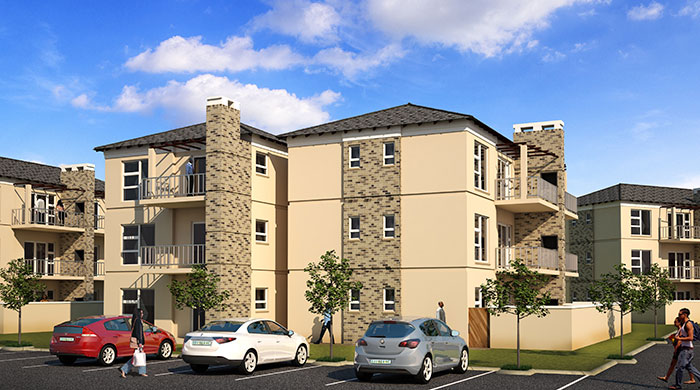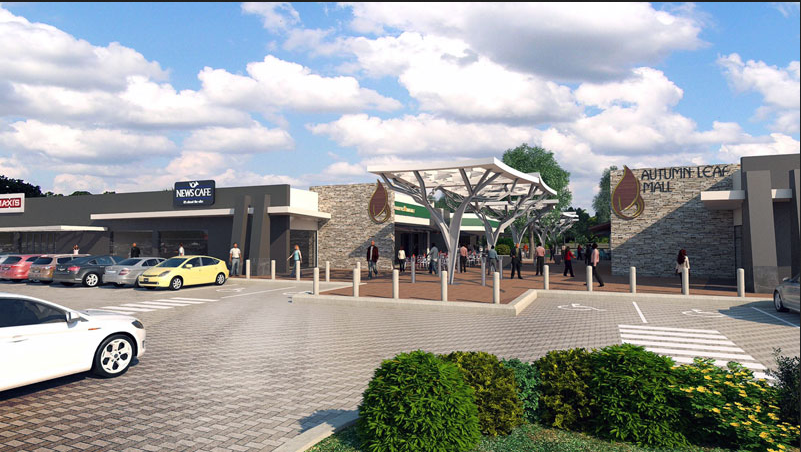How is open planning design more energy efficient?

Most of us have heard the term Open planning but what is it?
Open-planning allows air to flows from space to space with minimal barriers between the living areas or no barriers at all.
Did you Know?
Originally homes were designed and built to accommodate different rooms for different functions: the kitchen was for cooking, the dining room was for eating, and the living room was for gathering, entertaining, or relaxing. After World War II, the norm was that homeowners have houses with open floor plans.

Prior 20th Century traditional plan layout. Separate rooms closed in with walls and doors.
 |
 |
 |
 |
2018 Open plan design layouts.
Frank Taylor, mechanical engineer ignited the open plan concept in the workplace calling it the “Taylorism movement” which suggests that open planning design maximises industrial efficiency focusing on worker production only. This shift was massive but people were seen as robots and not human beings. Later with the help of architect Frank Lloyd Wright and the Burolandschaft an office that reflected both corporate image and gave way to people’s needs.

Taylorism open plan design.

Burolandschaft open plan design style.
Robert Propst invented the“ action office” cubicle that enhanced many companies liberation strategies with open planning design.
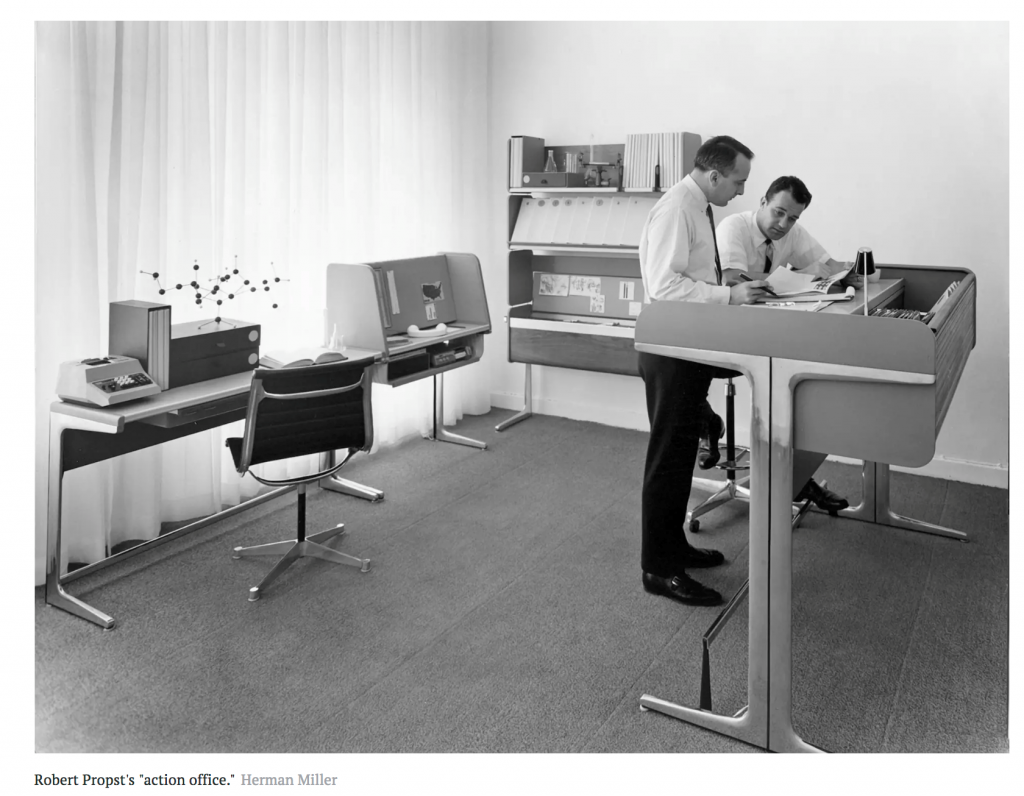
As the daily volcanic household cost of living increases, more and more people have joined the bandwagon trend in living a more eco- friendly and energy efficient lifestyle. Thus enabling big-time savings in their water and electricity bills and giving TLC back to our earth.
To date buyers are more aware of the long-term costs of electricity, in saying that energy efficient design can affect the value of property in the future.
Open planning influences energy efficiency through:
A. Natural Light
In a traditional closed floor plan design, you will come across certain rooms that are limited in receiving natural light from windows. Which therefore results in turning on all the lights like a christmas tree and consuming tons of energy. Open floor plan design lends itself to no walls or barriers, which unblock, allowing the spread of natural sunlight eliminating extra costs. In cooler climate places, the presence of added natural light also allows more heat into the building decreasing furnace costs. Sharing of natural light is also encouraged through open planning so each area receives.
B. Air Circulation
Air flow is maximized in an open plan design with open windows than a traditional design as walls impede air circulation making it hard for fresh air to travel into these separate spaces. Lack of airflow requires air-conditioning and ceiling fans to break through the stuffiness and hiking electricity costs.
C. Flexibility
With more space this allows home and building owners to be more flexible and creates opportunities to change up their living / working spaces to their liking and demands.
D. Reduced Square Footage
An open floorplan will be more spacious that a traditional plan
allowing one to cut down on their square footage. The smaller your
Space is the less energy it requires to heat or cool.
E. Socializing
Open floor planning gives way to open communication and interaction between people and employees and allows parents to keep watch over their children. Traffic flow in open spaces is also more viable.
Allandale Building , Midrand Gauteng
New energy efficient open plan building contributes to 30 % less energy.
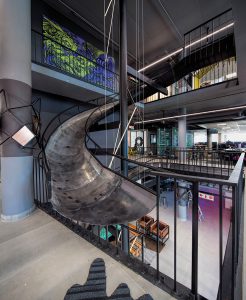 |
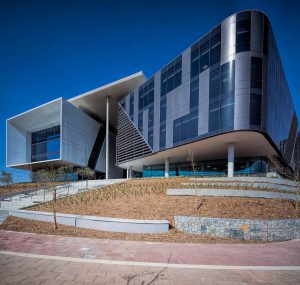 |
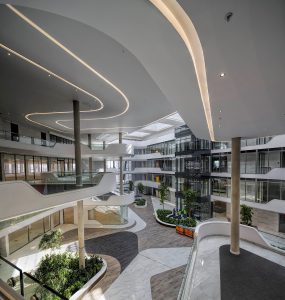 |
The new Cuningham Group office, CA, USA
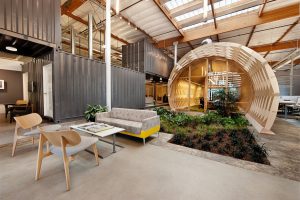 |
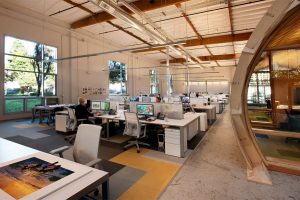 |
Factors enabling energy efficiency design in open planning:
1. Orientation
Position your home or office accordingly to climate and geo-graphical layout. Keep in mind wind, sun, heat and cooling factors when the architect designs.
2. Light colours
Choose light colours as they reflect heat and keep out heat whilst darker colour pallet absorbs heat.
3. Roof ventilation and insulation.
Roof tiles absorb heat in hot temperatures and re-radiate them into the building at night. When choosing tiles, opt for foil under them to reduce the slow release of heat into your space. Poorly ventilated roof space can lead to scorching temperatures.
4. Building materials
Glass – sunlight through glass windows become trapped like a greenhouse resulting in higher temperatures and illumination of` the space. Installing double glazed windows and doors.
Concrete floors and brick walls absorb heat from direct sunlight during the day to release it at night and absorb coolness though the night to reduce heat during the day.
5. Water
Choosing water saving features such as solar powered pumps, water tanks and grey water systems help aid in energy efficiency.
6. Landscapes & Plants
Certain Plants and trees can help create a cool zone. If you’re open plan home or office is stationed near a pool or water feature an advantage is that cool breezes pass over the pool and into your space.
Did you know plants genuinely give off cooler shade than shade structure due to their transpiration and evaporation of water from plants leaves?
Diagram showing factors to a more energy efficient home.

Sources:
https://www.ga.fr/en/newsroom/brief-history-open-plan-layout
https://www.theguardian.com/small-business-network/2015/oct/15/history-office-open-small-business-workplaces
http://fortune.com/2016/05/12/the-open-office-concept-is-dead/
https://www.makaan.com/iq/buy-sell-move-property/open-floor-plan-the-pros-and-cons
https://www.energy.gov/energysaver/energy-efficient-home-design
http://viewfinder.english-heritage.org.uk/search/reference.aspx?uid=212937&index=696&mainQuery=hospital&searchType=all&form=home
https://www.huffingtonpost.com/despina-katsikakis/the-case-for-healthy-offi_b_12674958.html
http://the.honoluluadvertiser.com/article/2006/Jul/24/ln/FP607240338.html
https://www.kritzingerarchitects.com/copy-of-french-school
http://www.travelandtradesouthafrica.com/2012/11/south-africas-masters-in-contemporary.html
http://www.home-designing.com/2012/02/sensational-doesnt-even-begin-to-describe-it/contemporary-open-plan-living-area
http://materialicious.com/2012/09/mill-valley-retreat-with-a-treehouse-feel-by-urrutia-design.html
https://www.lunchboxarchitect.com/featured/energy-efficiency-redhead-alterations/
https://officesnapshots.com/2013/11/08/cuningham-groups-culver-city-warehouse-offices/
If you are interested in becoming one of our subscribers, please visit our website.
To view notes with screenshots on how to use our website, please visit our Wiki site.
To view more articles, please visit our blog.
About Bronwyn Brown
Blue Sky Thinker ☾ Advertising & Design Manager Photography, Nature & Animal Lover❁





